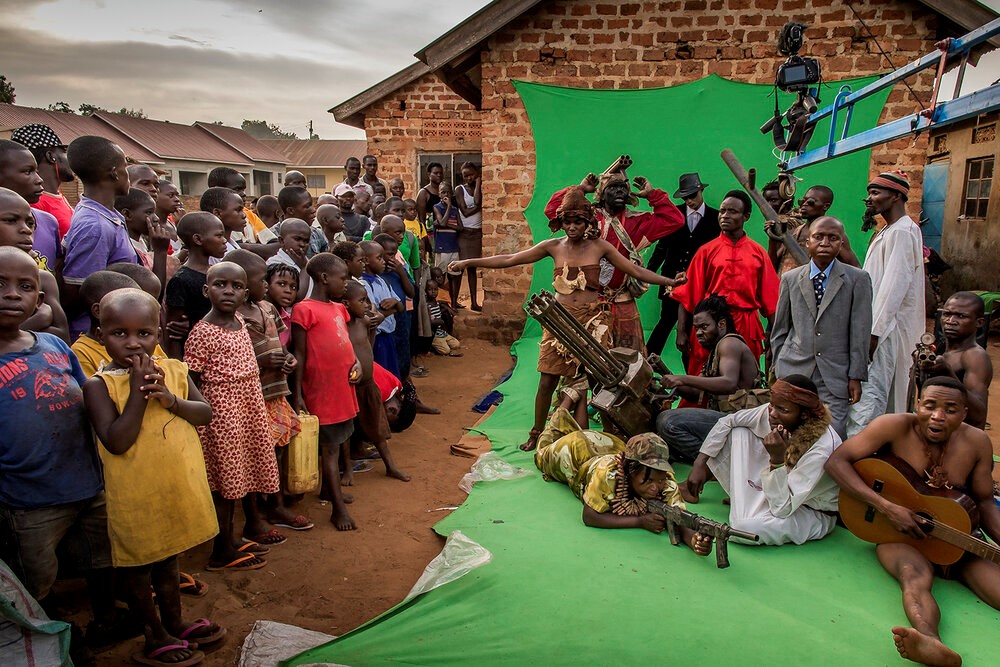
African Film does not exist in a vacuum, and there has been a recognition that something has fundamentally changed. The mode of productive forces has shifted, the visual forms they produce are different, and the technical, financial and institutional infrastructures that organize film production have undergone a deep transformation.
We believe that African cinema possess a high artistic film-specific originality, which can bring a fresh jive into world cinema. According to Rwandan Film Maker Eric Kabera who was in Kenya at the invitation of the newly established Trademark East Africa as a panelist in a moviemakers’ convention in 2011 to share the Rwandan experience and how it can be replicated in the region highlights in the epigraph, films are vehicle for self-articulation that would in tandem contribute significantly to the development of Africa.

In the post-genocidal Rwanda, like in Tanzania, the Kagame Administration took a restricted ideological stance to filmmaking by supporting or rather only allowing the production of films that promote the ‘unity’ of Rwandans by foregrounding the ‘We are all Rwandan’ trope. It is good to note that presently, the government of Rwanda sanctions and finances films (majorly documentaries) that agree with their message.
And therefore despite the erroneous geographical borders, it is evident that East Africans have maintained their original social ties that are enforced by a long history of shared experiences and culture. And according to Sabelo J. Ndlovu-Gatsheni and Brilliant Mhlanga who are African scholars and authors, do point out that the imperial cartographic impositions that “fragmented ethnic identities” are, therefore, of less consequence to the social lives of folks who find themselves in different modern East African geopolitical spaces

For instance, the peoples of Northern Uganda have a linguistic, cultural and genealogical affinity with some ethnicities in Southern Sudan. Uganda and Kenya’s border divides the Samia people in two different countries with both countries having an administrative district with the same name—Busia. The Samia people, whether they belong to Uganda or Kenya, would and do disregard the borders separating them.
Although the African film industry does not currently attract the same levels of popularity claimed by our European and American contemporaries, there has been significant growth.

Dr. Ashraf Simwogerere, a Ugandan film maker expressed an early interest in film due to the popularity of Nigerian films in Uganda. He produced the first Ugandan film in 2005 named Feelings Struggle. Dr. Ashraf Simwogerere thought Ugandans would appreciate a film representing their own culture and experiences.
As film makers look towards urbanization and emerging middle-class as the success drivers for the film industry. Perhaps one of Africa´s greatest assets is its youthful, highly diverse cultural composition. Africa being a continent with so many stories to tell, in line with the Sustainable Development Goal Eight (SDG 8) which is all about Promoting sustained, inclusive and sustainable economic growth, full and productive employment and decent work for all: our aim as IAMNATIV will be to provide new opportunities for young and highly talented youths, as we contribute to combat the global youth unemployment and improve livelihoods for people around Africa and the world.

iamnativ is the go to marketplace in Africa connecting African creatives to global clients.
The Innovation Village, Ntinda Complex, Kisassi Rd, Kampala, Uganda
Oudezijds Achterburgwal 1012 DJ, Amsterdam, The Netherlands

iamnativ is the go to marketplace in Africa connecting African creatives to global clients.
The Innovation Village, Ntinda Complex, Kisassi Rd, Kampala, Uganda
Oudezijds Achterburgwal 1012 DJ, Amsterdam, The Netherlands
Leave Your Comment